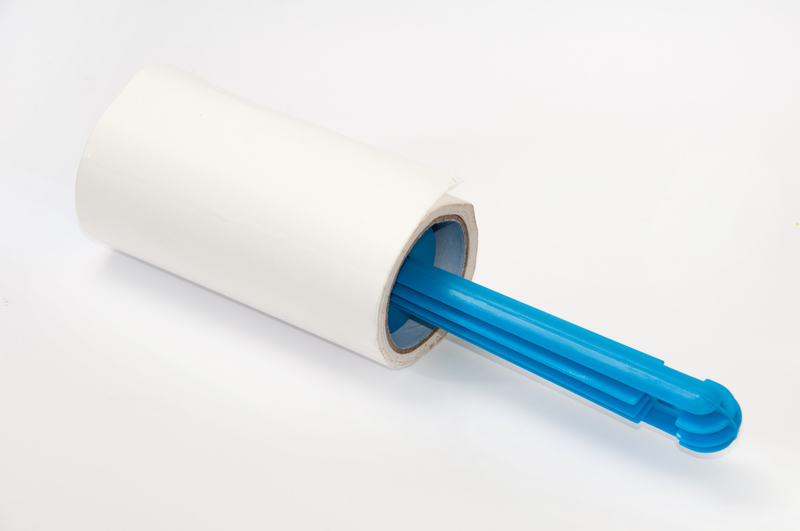Locating Mold in Your Home
Posted on 27/08/2024
Mold is an unwanted guest in many households, commonly thriving in damp, dark, and unventilated areas. Often undetectable until it has deeply rooted, mold issues in homes can lead to health problems ranging from minor respiratory irritations to severe allergic reactions. Understanding how to locate mold in your home is crucial for maintaining a safe and healthy living environment. Below, we delve into comprehensive methods to identify, prevent, and remediate mold presence.
Understanding Mold: The Basics
Mold is a type of fungus that reproduces through tiny spores, which are ubiquitous in both indoor and outdoor settings. While mold spores are generally harmless in small quantities, they can rapidly multiply in moist conditions, creating colonies that are problematic. Common types of indoor mold include Aspergillus, Cladosporium, and Stachybotrys (black mold). Identifying and addressing mold early can save homeowners from significant health risks and costly repairs.

Common Areas for Mold Growth
Certain areas in your home are more prone to mold growth:
Bathrooms
Bathrooms are a significant breeding ground for mold due to frequent water use, high humidity, and often inadequate ventilation. Pay attention to areas around the shower, bathtub, tiles, and under sinks.
Kitchens
Kitchens can harbor mold due to cooking activities that produce moisture. Areas to inspect include under the sink, behind and under appliances, corners, and around plumbing fixtures.
Basements
Basements are typically damp and poorly ventilated, making them a primary candidate for mold development. Look at foundations, walls, and under carpets or flooring.
Attics
Attics can accumulate moisture due to roof leaks and poor insulation. Mold can appear on wooden beams, insulation material, and under roof sheathing.
Signs Indicating Mold Presence
Recognizing mold is often the first step to dealing with it effectively. Here are several indicators of mold presence:
Odor
A persistent musty or earthy odor is often an early sign of mold, especially if detected in areas like basements or bathrooms where mold is likely to thrive.
Visible Growth
Mold may appear as black, green, white, or grey spots. It can start small but expands rapidly if conditions allow.
Health Symptoms
Unexplained allergies, respiratory issues, or skin irritations among household members could indicate mold presence. Symptoms might include sneezing, coughing, skin rashes, or asthma attacks.
Water Damage
Signs like water stains, discoloration on walls, or ceiling tiles suggest moisture intrusion, which can lead to mold growth.
How to Effectively Inspect Your Home for Mold
A thorough inspection is key to identifying hidden mold. Here's a step-by-step guide to help you conduct an efficient mold inspection:
Use Your Senses
Start with simple observation. Use your sense of smell to detect musty odors and visually inspect commonly affected areas for any signs of mold.
Moisture Meter
Moisture meters can help detect areas with high moisture levels, often unseen by the naked eye. These devices are particularly useful in identifying potential problem zones behind walls or under floors.
Air Quality Test Kits
Home-test kits can collect air samples to detect mold spores. While these kits give preliminary results, they may not be as accurate as professional testing.
Professional Mold Inspection
Engage a professional if you suspect extensive mold contamination. Certified mold inspectors utilize advanced tools, such as thermal imaging cameras and borescopes, to identify mold in hard-to-reach places.
Preventing Mold Growth
Prevention is always more manageable and cost-effective than remediation. Here are strategies to control moisture and prevent mold growth:
Control Humidity
Maintain indoor humidity levels between 30-50%. Use dehumidifiers, especially in damp areas, and ensure good ventilation.
Fix Leaks Promptly
Repair leaks in roofs, walls, or plumbing immediately to prevent water accumulation.
Ensure Proper Ventilation
Use exhaust fans in bathrooms and kitchens to remove excess moisture. Ensure that clothes dryers vent outside your home.
Dry Wet Areas Quickly
Immediately dry and clean any area that becomes wet. Use fans to speed up the drying process if necessary.
Mold-Resistant Products
Consider mold-resistant drywall and paint for your home, especially in moisture-prone areas.

Remediation: Handling Mold When You Find It
If inspection confirms mold presence, remediation steps must be taken to rectify the issue:
Small Areas
For minor mold issues (less than 10 square feet), you can usually manage the cleanup yourself using household detergents and water. Wear protective gear and ensure the area is well-ventilated.
Larger Contaminations
Consider hiring professionals for extensive mold growth. Mold remediation specialists follow strict guidelines and have the appropriate tools to safely remove and treat mold.
Disposal of Contaminated Items
Dispose of any porous materials like carpets, insulation, or drywall that cannot be adequately cleaned. Non-porous materials should be cleaned and disinfected thoroughly.
Post-Remediation Inspection
Once the mold has been removed, conduct a follow-up inspection or test to ensure that the issue has been resolved entirely.
Conclusion
Mold in your home is more than just an unsightly nuisance; it poses significant health risks and can cause structural damage if left untreated. Locating mold early, understanding its signs, and taking preventive measures can save you from costly repairs and health issues. Always use appropriate methods and, when in doubt, consult professionals for an accurate assessment and effective remediation. By staying vigilant and proactive, you can maintain a safe and healthy living space free from mold.

 Company name:
Company name:  Telephone:
Telephone:  Opening Hours:
Opening Hours:  Street address:
Street address:  City:
City:  E-mail:
E-mail:  Web:
Web:  Description:
Description: 







